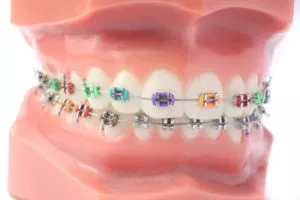Understanding Braces and their Types for Orthodontic Treatment
Dental health is fundamental to our overall well-being, and in some instances, we may need the help of orthodontic treatments to correct dental alignment issues. A common tool in orthodontics is the dental brace. These small devices play a crucial role in straightening and aligning teeth. In this article, we’ll explore the different types of dental braces available and help you choose the best for you at Dental Asensio.
Types of Dental Braces
When it comes to dental braces, there are several options available on the market. Each type has its own characteristics and benefits. Below, we’ll look at the four main types:
Traditional Metal Braces
Traditional metal braces are the most known and widely used. They’re made of high-quality stainless steel and are quite durable. These braces attach to the front of the teeth and are connected by a metal wire.
Pros of traditional metal braces:
- They are more affordable compared to other types.
- They offer effective results in dental straightening.
- They are ideal for treating more complex cases.
Cons of traditional metal braces:
- They are more noticeable compared to other types, due to their metallic appearance.
- They may cause initial irritation or sensitivity.
- They require proper care and cleaning to avoid oral hygiene issues.
Traditional metal braces are a popular option for those seeking an effective and affordable solution for their orthodontic treatment.
Ceramic Braces
If you’re looking for a more aesthetic option, ceramic braces could be the right choice for you. These braces are made from ceramic or porcelain materials, allowing them to blend with the natural colour of your teeth.
Pros of ceramic braces:
- They are less noticeable due to their colour-matching appearance.
- They provide effective results in dental straightening.
- They are ideal for people who want a more discreet look during treatment.
Cons of ceramic braces:
- They are more prone to staining or breaking compared to others.
- They can be slightly more expensive than other types.
- They require proper care and cleaning to avoid oral hygiene issues.
Ceramic braces are a popular choice for those who want to correct dental alignment without compromising aesthetics.
Lingual Braces
If you’re seeking an even more discreet option, lingual braces could be the perfect choice. Unlike other types placed on the front of the teeth, lingual braces attach to the back of the teeth, hiding them from view.
Pros of lingual braces:
- They are invisible from the front.
- They provide effective results in dental straightening.
- They are ideal for people concerned about aesthetics during treatment.
Cons of lingual braces:
- They require an adaptation period to get used to speaking and eating with them.
- They can be more expensive than other types of braces due to their customized nature.
- They require more time and skill from the orthodontist for installation.
Lingual braces are an excellent option for those who want to straighten their teeth discreetly without compromising their appearance.
Self-ligating Braces
Self-ligating braces are an innovation in the field of orthodontics. These braces have a special mechanism that eliminates the need to use elastic or metal ties to keep the wire in place.
Pros of self-ligating braces:
- They reduce friction and pressure compared to others.
- They allow for easier and quicker adjustments during follow-up visits.
- They may require fewer visits to the orthodontist compared to other types.
Cons of self-ligating braces:
- They can be more expensive.
- They may not be suitable for all orthodontic treatment cases.
- They require proper care and cleaning to avoid oral hygiene issues.
Self-ligating braces are an interesting option for those looking for a more comfortable and convenient orthodontic treatment.
Choosing the Right Types of Dental Braces for You
When it comes to choosing the right type of dental bracket for you, several factors should be considered. These include cost, desired aesthetics, the severity of your malocclusion case, and your orthodontist’s recommendations. At Dental Asensio, we have qualified orthodontists who will choose the best option for you.
Frequently Asked Questions (FAQs)
- Do dental braces hurt? It’s not unusual to experience some discomfort or sensitivity after the placement. However, any pain should be temporary and can be relieved with over-the-counter painkillers if needed.
- How long does treatment with dental braces last? The duration of the treatment can vary depending on the individual case. On average, it can last between 18 months and 3 years.
- Can I eat any kind of food with dental braces? It’s recommended to avoid sticky, hard, or foods that require excessive biting to prevent damaging the braces. At Dental Asensio, we’ll provide a list of foods you should avoid.
- Will I need to wear retainers after my dental braces are removed? Yes, it’s likely that you’ll need to wear retainers after the treatment to keep your teeth in their new position.
- Is it possible to correct dental alignment without braces? In some mild cases of malocclusion, it’s possible to use clear aligners like Invisalign or other orthodontic treatments without braces.
Conclusion
Choosing the correct type of dental bracket is a crucial step in your journey towards a straighter and healthier smile. These types of dental braces are excellent options to consider. Don’t hesitate any longer, come to Dental Asensio and a professional will recommend the best option for your personal case. Contact us and book an appointment now! Soon, you’ll enjoy a more beautiful and confident smile!






